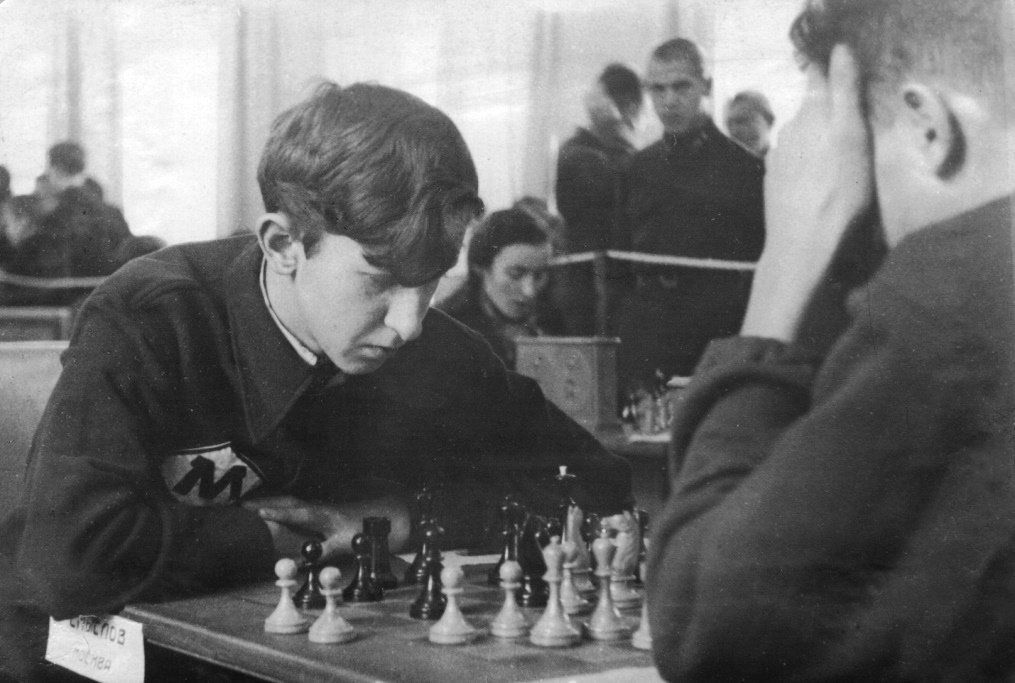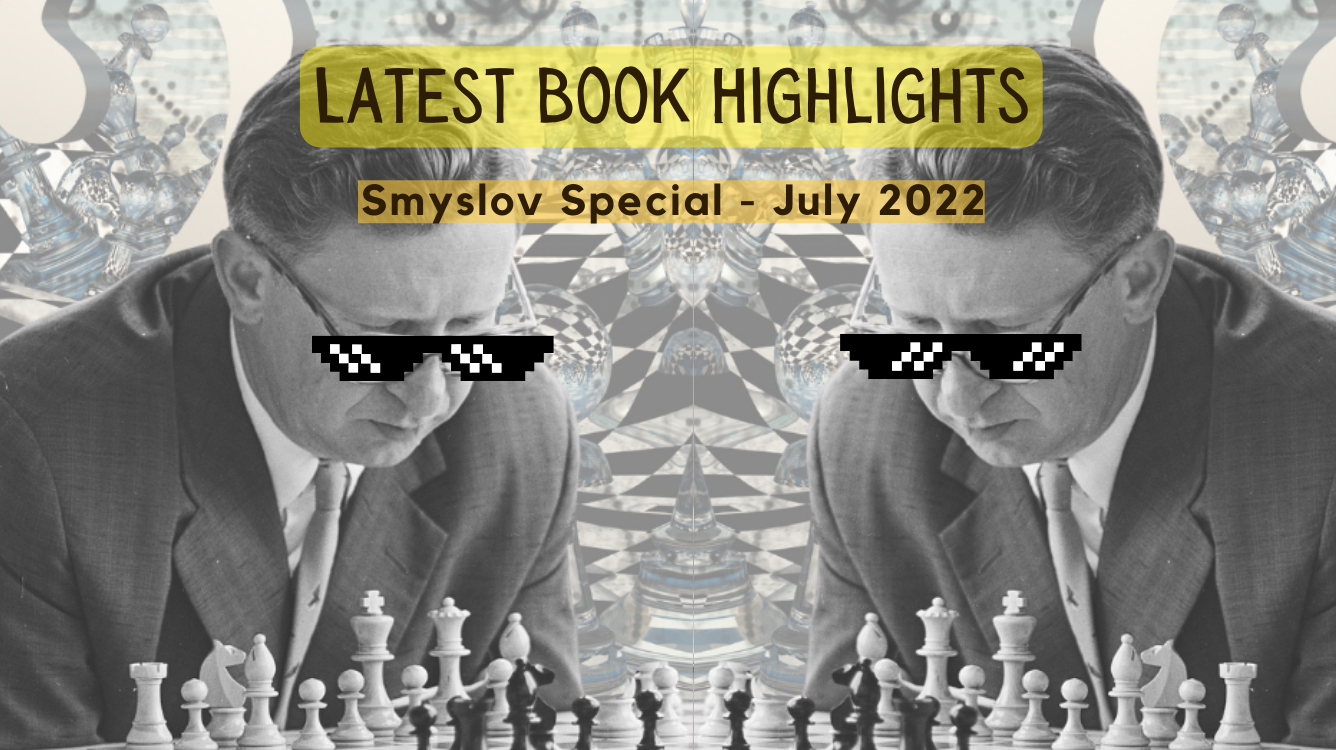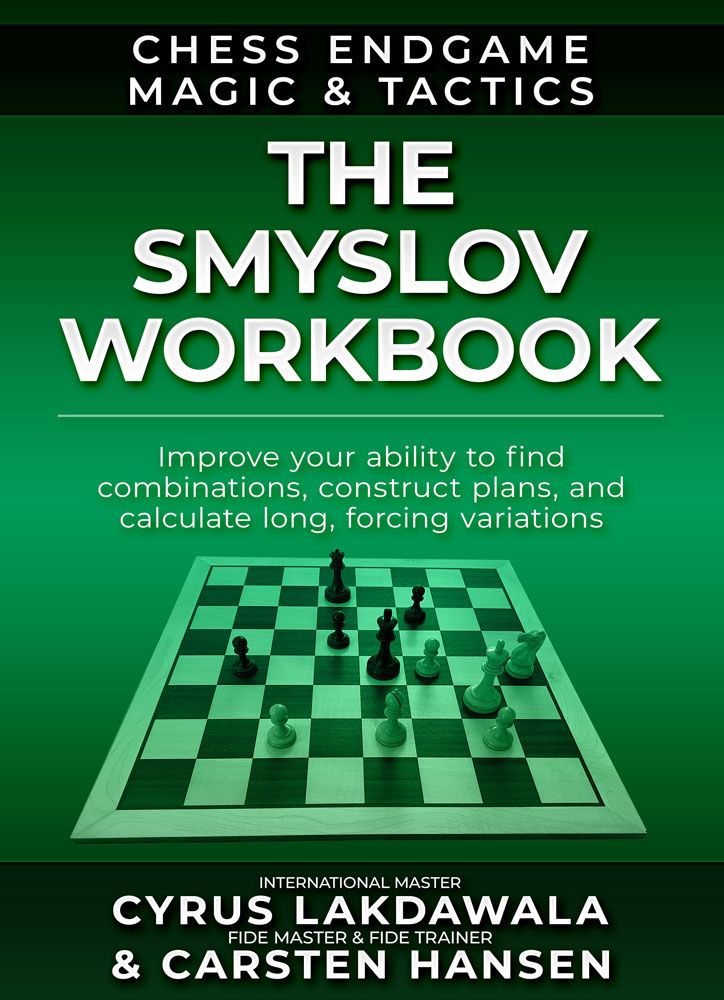Forward Chess (July 2022)
Smyslov Time
Studying the games of strong players is always a good way to improve one’s understanding of chess.
Some of the most instructive games to study were played in the Chess Olympiads of the 1950s and 1960s, in which the most powerful Soviet players were able to dominate all opposition. Given the great difference in both knowledge and playing strength between the Soviet stars and their more amateur counterparts, the games in question often provide near-flawless examples of how to execute a winning tactic or strategic plan. Mikhail Tal, the eighth World Champion, was notorious for the former and his predecessor (and, remarkably, successor) Mikhail Botvinnik specialized in the latter.

Yet some World Champions have never attracted the interest and attention of others. Vasily Smyslov, the seventh World Champion, is a case in point. Fortunately, a new book has appeared on Forward Chess, which seeks to shine a light on Smyslov’s extraordinary skills.
The Smyslov Workbook by Cyrus Lakdawala & Carsten Hansen (CarstenChess) promises ‘Chess Endgame Magic & Tactics’ and offers the reader the opportunity to ‘Improve your ability to find combinations, construct plans, and calculate long, forcing variations’ and ‘For the purpose of instruction, the material is based on the output of former World Champion Vassily Smyslov (1921-2010), using his endgame compositions from various works and publications as well as several of his practical endgames from games from tournaments and matches throughout his career against players such as Mikhail Botvinnik, Paul Keres, Bent Larsen, Efim Geller, Tigran Petrosian and several other world class players.’
The material is presented in five parts, namely:
- White to Play and Win Studies
- Drawing Studies
- Composed Mating Problems
- Practical Rook Endings
- Real Life
Casual readers will no doubt find the positions in the Real Life section the most appealing, at least initially.
Here are a couple of samples.
Here is a fine example from earlier in the book, specifically from the chapter on Composed Mating Problems, to try and lure the reader away from practical play to the ‘dark side’ of chess studies.
Smyslov
Moi Etyudy, 2005
White to Play and checkmate in 7 moves!
‘Black is about to promote on c1 and regain lost material. Look closely, and you may find a way to exploit the unfavorable feng shui of Black’s king position.’
Checkmate in seven moves sounds daunting, but after the key move, everything falls into place nicely. Clue: It is a rook move.
The Life and Games of Vasily Smyslov Volume 1: The early years 1921-1948 by Andrey Terekhov (Russell Enterprises) is another book about Smyslov, which is also available on Forward Chess, which goes into great detail about his life. Indeed, despite featuring a very large amount of material, this is only the ‘first volume of a multi-volume set’ and in it ‘Russian FIDE master Andrey Terekhov traces the development of young Vasily from his formative years and becoming the youngest grandmaster in the Soviet Union to finishing second in the world championship match tournament. With access to rare Soviet-era archival material and invaluable family archives, the author complements his account of Smyslov’s growth into an elite player with dozens of fascinating photographs, many never seen before, as well as 49 deeply annotated games.’

Additionally, ‘German grandmaster Karsten Müller’s special look at Smyslov’s endgames rounds out this fascinating first volume.’
The author opines that ‘Smyslov is arguably the least known of all world chess champions, despite his many achievements and then puts sums up his career in an intriguing nutshell:
‘Vasily Vasilievich Smyslov (1921-2010), the seventh world champion, had a long and illustrious chess career. He played close to 3,000 tournament games over seven decades, from the time of Lasker and Capablanca to the days of Anand and Carlsen. From 1948 to 1958, Smyslov participated in four world championships and mounted the toughest challenge to the great Mikhail Botvinnik. Smyslov and Botvinnik played over 100 games (about 10% of all games that Botvinnik ever played in official competitions!) and their rivalry was one of the primary intrigues of the chess world in the 1950s. Smyslov finally became the world champion in the third attempt in 1957, but lost the title in the return match with Botvinnik the following year. Smyslov continued playing at the highest level for many years and made a stunning comeback in the early 1980s, making it to the final match of the candidates cycle. Only the indomitable energy of 20-year-old Garry Kasparov stopped Smyslov from qualifying for another world championship match at the ripe old age of 63!’
Volume one is a triumph, with plenty of fruit from the author’s extremely impressive research. It will be interesting to see what the subsequent volumes can add to the Smyslov story.
Smyslov’s games are certainly instructive and his chess career was rich and varied. Forget about the trendier champions for now and add a little Smyslov action to your study time.
Sean Marsh
- Is it time for a Modern Benoni revival - April 17, 2024
- Book Highlight: DragonMasters, Volume 1 - March 1, 2024
- Latest Book Highlight: The Life and Games of Dragoljub Velimirovic - February 1, 2024



